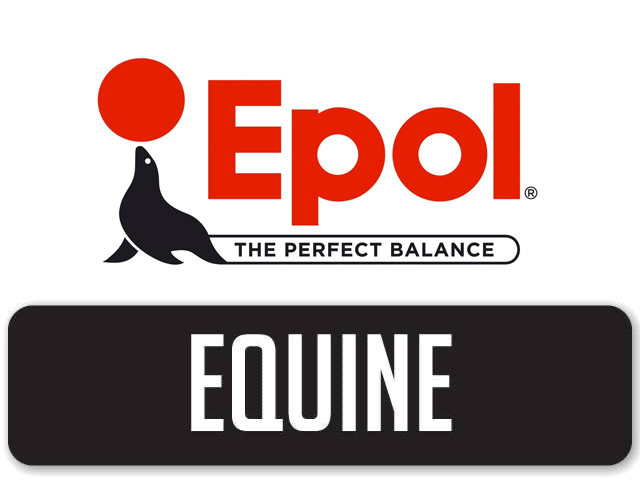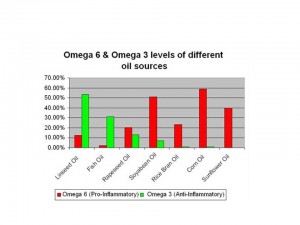Many horse owners frequently reach for a cup of oil to add to their horses’ diet but with shelf upon shelf of different oils, which is the best choice and why should it be used?
One of the main reasons for using oil is to increase the energy in a horse’s diet to aid weight gain or to provide added energy without fizz. Oils supply extra energy without increasing the NSC – Non Structural Carbohydrate (which includes sugars and starch, namely cereal grains) – of the diet. Too much NSC in the diet increases the risk of digestive disorders and may be unsuitable for sensitive horses or those that become hot. Because oils provide about 2 ½ to 3 times more digestible energy than an equal weight of cereal grain, a high energy diet can be obtained by using oils without sacrificing any fibrous material critical for digestive health and the prevention of digestive disturbances.
Benefits of including oil:
Added oils are well utilized by the horse and studies show that fats and oils added to the horse’s diet are 76 – 94% digestible. Even without increasing the total energy of the diet, having oils or fat in the ration has been shown to increase the amount of dietary energy available for growth, lactation and physical activity (Kane et al., 1979; McCann et al., 1987; Scott et al., 1993). Adding oils to the diet decreases total body heat production (beneficial for those working in hot climates), leaving more energy available for maintenance and production (Scott et al., 1993).
High-fat diets have been shown to enhance both aerobic activity (endurance activity) and anaerobic activity (sprint-type activity) and help to delay fatigue. Horses fed a high-fat diet appear to have greater muscle glycogen utilization with no change in their blood glucose concentration during anaerobic activity (sprinting), whereas during aerobic activity (endurance) there was comparatively a smaller reduction in blood glucose concentration. Glycogen sparing within the muscles also occurred further aiding in the delay of fatigue. (Oldham et al.,1990).
Research suggests that by providing oil in the diet which the horse can utilise when walking, trotting and even cantering (up to a heart rate of around 150 beats per minute), the stores of glycogen are spared so that when the horse starts to gallop he has a full tank of fuel to use for high intensity work resulting, in effect, in improved stamina. It also seems that, because the horse is starting with a full tank, he doesn’t deplete energy stores completely, so recovers from an intense work period more quickly and can therefore perform more frequently.
Oils are generally suitable for any horse however those with veterinary conditions such as Laminitis, Cushings, Insulin Resistance, Tying up, Gastric Ulcers and even frequent colics, can benefit hugely from using oils within the diet. This is due to the fact that oils provide energy “safely” while avoiding the use of ingredients such as cereal grains and sugars, both of which can have harmful effects on horses with these conditions.
So which oil is best?
In terms of supplying energy, all oils are 100% fat, so there is no difference in the number of calories/energy each provides. However, there are large variations in the amount of omega-3 and omega-6 essential fatty acids that exist within oils used in equine diets. These essential fatty acids (EFA) are polyunsaturated fats needed for various metabolic processes. The horse’s body does not produce EFAs, and thus these must be provided in the diet. Omega 6 and Omega 3 have the greatest biological activity in the body, which is why more focus is placed on these two.
Fatty acids are of particular interest to researchers because of their effect on inflammation and immunity. Increased levels of fatty acids supplied in Omega-3 oils may help to maintain pain-free, supple and mobile joints in horses and ponies. Benefits claimed of Omega-3 oils also include:
• Helping horses’ joints and connective tissues heal and recover from the stress of exercise and thus aid recovery after training and competition.
• Promoting a healthy, shiny, glossy coat
• Promoting stronger and faster growing feet useful for horses and ponies prone to laminitis and those with slow growing feet or those difficult to keep shod.
• Boosting the immune system.
• Being good for the respiratory system.
• Helping to calm the temperament of excitable horses. .
• Ensuring correct development of the nervous system, brain muscles and skeleton.
• Maintaining and reparation of cellular walls.
• Anti-inflammatory properties.
• Aiding wound healing.
• Supporting a healthy heart and blood circulation.
• Anti-allergic properties.
• Supporting a strong metabolism.
Oils containing higher levels of Omega 3 are found in the natural diet of horses (forage) and can be digested easily. Omega 6 oils, however, are generally found in larger amounts in cereal grains. Horses fed large grain meals, thus, may have more Omega 6 oils in their diet than Omega 3 oils while horses fed no grains may have more Omega 3 than Omega 6 oils so, as with all nutrients, balance is the key.
Research has shown that the correct ratio of Omega 3 to Omega 6 fatty acids is vital for the oils to work beneficially and therefore it is important that the correct combination is supplied in order to achieve the best results. Currently, no exact ratio has not been established in horses, but given that Omega 3 oils are more prevalent in the horse’s ‘natural diet’, its stands to reason that Omega 6 oils should be provided at a lower level or at least 1:1.
Studies have shown that higher levels of Omega 6 can increase spookiness, cause horses to be more unmanageable, increase anxiety, increase cribbing, contribute to joint health problems (premature arthritis, injuries that fail to heal completely) and fertility concerns (weak or insufficient sperm, a reliance on hormones for mares) among others.
Despite this, Omega 6 should not be avoided as it is essential in supporting some inflammation required to fight infection and heal tissues as well as being involved in hormone production, brain function and regulating blood pressure.






